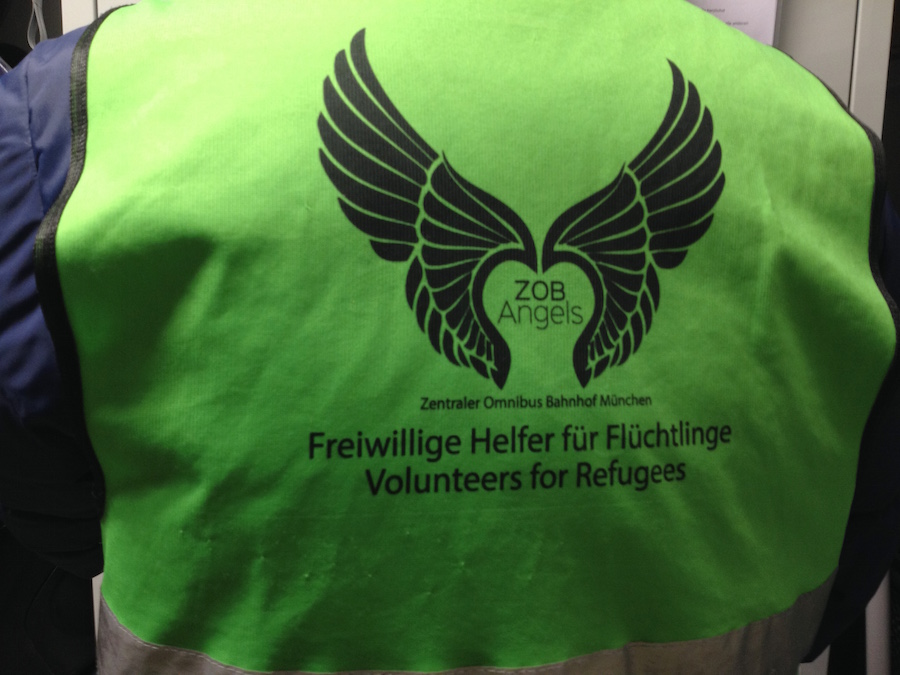
1.
On my first full day in Munich, I spent a few hours at ZOB, zentrale omnibus bahnhof, an imposing structure, vaguely looking like a bus itself. I walked there from my friend Tamiko’s house near the river Isar. On her suggestion, I first went for a stroll along the riverbank, to breathe and expand. The area is really beautiful with pedestrian paths and green spaces on both sides of the river, right in the heart of the city. So unlike the Spree in Berlin which is bound in canals everywhere. Later Tamiko told me that the area had been “renaturalized” to alleviate yearly flooding as Isar originates in the mountains and the water surges at least once a year. I went down to the riverbank from one of the bridges and walked to another bridge about ten minutes away. In the dry areas under both bridges were several beds and other evidence of human residence. I wondered where the occupants were, and felt dis-ease as I took a few pictures, for my records, of their home. We use the term homeless to mean without a “home” but it really means without a registered address. We create homes for ourselves wherever we are, even if we sleep on somebody’s discarded mattress under a bridge in a most prosperous city.
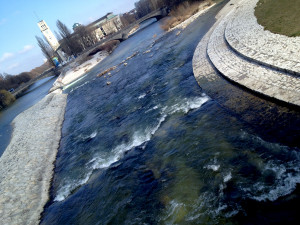 Munich is indeed a wealthy city as it houses the headquarters of industrial giants like Mercedes Benz, BMW, Bayer, etc. This is the city everybody wants to come to for jobs. Accordingly, it is a very expensive city, evidenced even in the Arab and Turkish markets which i chanced upon on my way to ZOB. Following a path along a narrow canal, one of Isar’s bound tributaries, and passing a cemetery on quiet Pestalozzistrasse that overlooks the canal, I came out into a very busy crossway near
Munich is indeed a wealthy city as it houses the headquarters of industrial giants like Mercedes Benz, BMW, Bayer, etc. This is the city everybody wants to come to for jobs. Accordingly, it is a very expensive city, evidenced even in the Arab and Turkish markets which i chanced upon on my way to ZOB. Following a path along a narrow canal, one of Isar’s bound tributaries, and passing a cemetery on quiet Pestalozzistrasse that overlooks the canal, I came out into a very busy crossway near 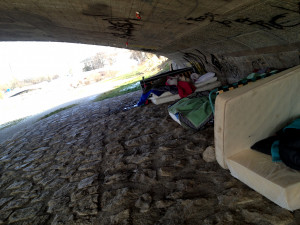 Hauptbahnhof with four tramlines carving the street surface. I went towards one of the streets branching off because I saw a store sign in Arabic, and discovered many more store signs in Arabic, everything from Egypt Airline to Ali Baba Restaurant to a few jewelers, food stores, travel agencies and other necessities. I was nicely surprised when I discovered even more stores on the side streets and, accordingly, large numbers of p
Hauptbahnhof with four tramlines carving the street surface. I went towards one of the streets branching off because I saw a store sign in Arabic, and discovered many more store signs in Arabic, everything from Egypt Airline to Ali Baba Restaurant to a few jewelers, food stores, travel agencies and other necessities. I was nicely surprised when I discovered even more stores on the side streets and, accordingly, large numbers of p
edestrians speaking in Arabic and Turkish and Swahili. The familiar music of their speech temporarily became my home.
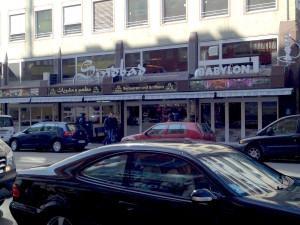 The proximity of these bustling streets to the inter-city bus station seemed quite familiar too, and somehow expected. I thought, of course, the outsiders, the foreigners, would be concentrated near the cheapest transit hub. Two streets over, Hauptbahnhof is surrounded by stores too, but none have Arabic signs. As I followed Google map’s directions to ZOB, I soon exited that temporary comfort zone and found myself walking along the streets lines on both sides with big office buildings. Big, not tall, for nothing is tall here except the industrial chimney stacks and church steeples punctuating the sky. The buildings have six or seven stories maximum, but they expand over several blocks, like giant lego pieces. Vaguely looking like a bus itself, ZOB sits by the railroad tracks that cut through the city to the central train station, hauptbahnhof. Around ZOB, within easy walking distance of it if one is tired or carrying luggage, there are no stores and eateries. The station itself has s
The proximity of these bustling streets to the inter-city bus station seemed quite familiar too, and somehow expected. I thought, of course, the outsiders, the foreigners, would be concentrated near the cheapest transit hub. Two streets over, Hauptbahnhof is surrounded by stores too, but none have Arabic signs. As I followed Google map’s directions to ZOB, I soon exited that temporary comfort zone and found myself walking along the streets lines on both sides with big office buildings. Big, not tall, for nothing is tall here except the industrial chimney stacks and church steeples punctuating the sky. The buildings have six or seven stories maximum, but they expand over several blocks, like giant lego pieces. Vaguely looking like a bus itself, ZOB sits by the railroad tracks that cut through the city to the central train station, hauptbahnhof. Around ZOB, within easy walking distance of it if one is tired or carrying luggage, there are no stores and eateries. The station itself has s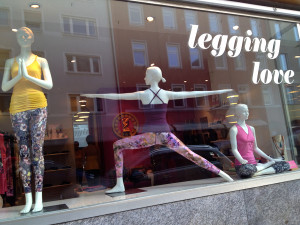 ome stores and cafes on the street level. The expected: McDonald’s, KFC, dm, two bakeries, a Thai fast food, and a German one, scattered amidst bus line offices and a few mobile phone stores.
ome stores and cafes on the street level. The expected: McDonald’s, KFC, dm, two bakeries, a Thai fast food, and a German one, scattered amidst bus line offices and a few mobile phone stores.
I had some time before I was supposed to meet the ZOB Angels, so I sat at the Thai place, which was the only place that had free wifi, and worked a little over a cup of tea until six o’clock when I went to the lower level, on the outer edge of station, near a pedestrian entrance, where three containers are set up by the Red Cross to provide aid to incoming refugees. The Angels were already there, and my friend Peter introduced me to them as he gave me a neon green vest imprinted with the logo of ZOB Angels to wear and a piece of duct tape to use as a name tag. Then he showed me their station: One of the containers has a tiny office space lined on one side with stacked baby car seats and on the other with shelving units holding non-perishable foods and disposable eating things. Across from this container is another one stuffed with bins full of clothes, shoes, diapers, hygiene products, bags, blankets, etc. I was told that if and when newly arrived refugees came, I could hand out whatever they needed from here. 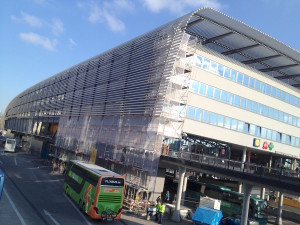 Then the food arrived in a hatchback driven by a woman. The volunteers, Ahmed, Hani and Peter took the food, lots of bread and a large pot of vegetable soup, inside the office/food kiosk container.
Then the food arrived in a hatchback driven by a woman. The volunteers, Ahmed, Hani and Peter took the food, lots of bread and a large pot of vegetable soup, inside the office/food kiosk container.
There were no refugees around, well, excepting Hani and Ahmed and a few other volunteers who arrived a bit later. Hani told me that there haven’t been many refugees coming through in the past two weeks since the borders were closed. So now they mostly hand out food and clothes to the homeless, and to ordinary passengers who discover this aid station. There was nothing to do for me, so I asked Hani if he would be willing to give me an interview on camera.
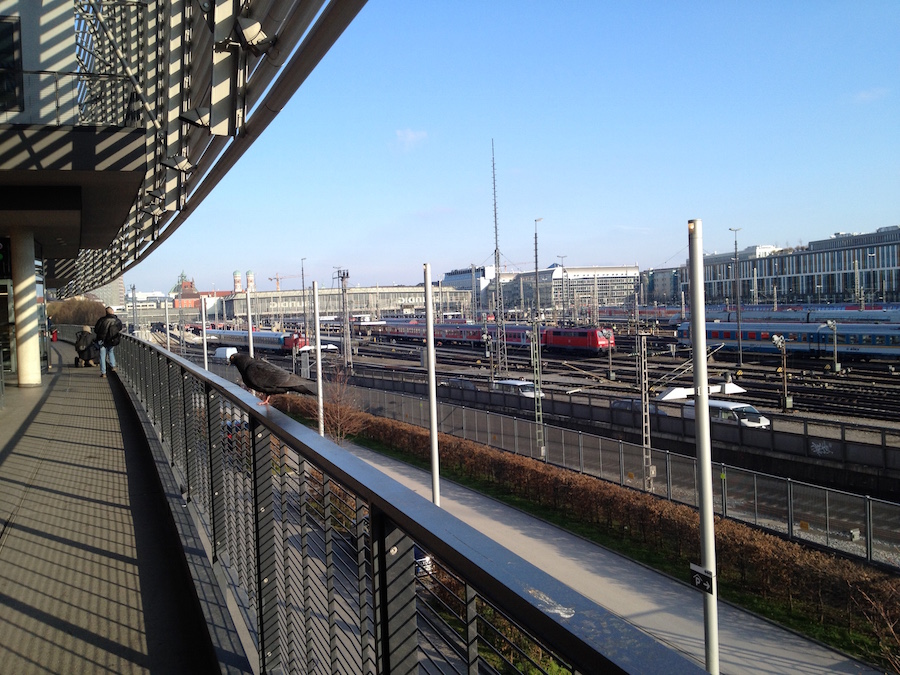
Part 2 will be posted soon.
Recent Comments